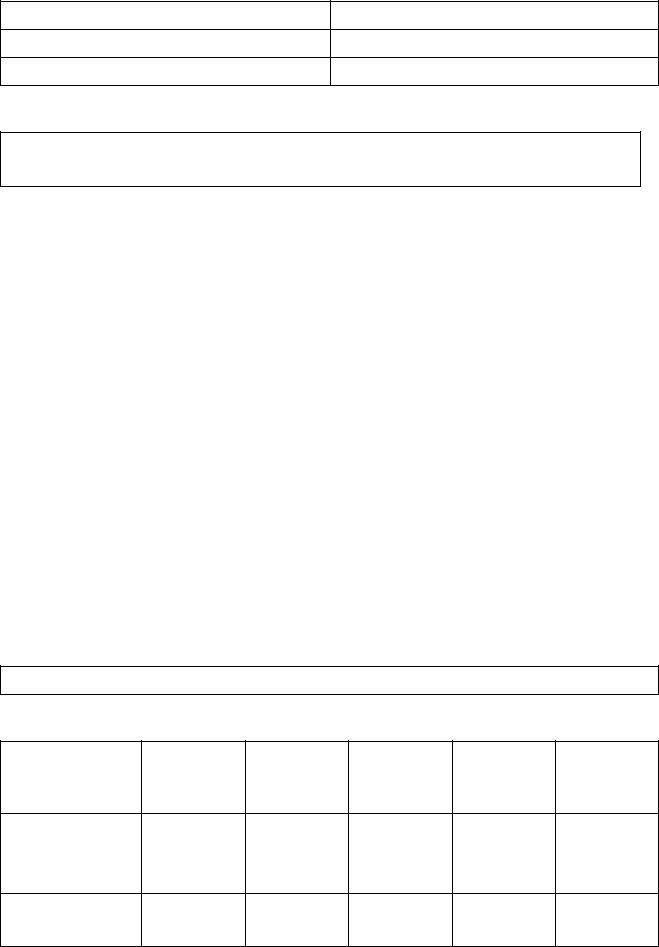
Введение в специальность СТ_doc
.pdfМинистерство образования и науки РФ
Федеральное государственное бюджетное образовательное учреждение высшего профессионального образования
Ухтинский государственный технический университет (УГТУ)
Введение в специальность на английском языке по направлению СТ
для студентов II курса
Методические указания
Ухта 2013
УДК 811.111:69 (075.8) Л 25
Ларева, А. Г.
Иностранный язык. Введение в специальность на английском языке по направлению СТ [Текст] : метод. указания / А. Г. Ларева. – Ухта : УГТУ, 2013.
– 55с.
Методические указания «Введение в специальность на английском языке по направлению СТ» предназначены для студентов II курса, обучающихся по программе бакалавриата по направлению 270800 «Строительство».
Методические указания включают 3 раздела: «Избранное направление профессиональной деятельности», «Из истории дисциплины», «Современные тенденции развития строительных технологий», а также приложение с упражнениями по грамматике. Каждый раздел содержит тексты с предтекстовыми и послетекстовыми заданиями, направленными на освоение профессиональной лексики, развитие навыков просмотрового и поискового чтения. В конце каждого раздела дан словарь для изучения терминов.
Тексты информативны, имеют профессиональную направленность, даются в логической последовательности, что помогает студентам приобрести знания по избранной специальности. Они также являются основой для развития устной и письменной речи.
К методическим указанием дано аудио и видео сопровождение Содержание методических указаний соответствует рабочей программе.
Методические указания рассмотрены и одобрены на заседании кафедры
14.01.2013 года, протокол № 1.
Рецензент: Т. В. Ложкина, старший преподаватель кафедры иностранных языков
План 2013 г., позиция № 5 Объем 56 с. Тираж 100 экз. Заказ № 271 Компьютерный набор Подписано в печать 31.01.2013 г.
© Ухтинский государственный технический университет, 2012 169300, Республика Коми, г. Ухта, ул. Первомайская, д. 13
Типография УГТУ.
169300, Республика Коми, г. Ухта, ул. Октябрьская, д. 13.
3

Module I. FIND YOUR DREAM JOB
Read the introduction and answer the question: What would you like to deal with in future?
Water Resources Engineer
Got Water?
You turn on the tap and out comes water! It's clean. It's safe. You drink, without stopping to think about it. But if you were a Water Resource engineer, you'd think about water every day. Is it safe for people to drink? Is it getting to where it is suppose to be? Is there enough? Making sure people have clean drinking water is one of the most important jobs on the planet! It literally keeps people alive and healthy.
Transportation Engineer
Look both ways!
Did you cross a street today? Wait for a walk signal? You probably did but didn't give it a second thought, but if you were a transportation engineer, you'd get to figure out how people and vehicles move about smoothly and safely. Transportation engineers start their work thinking about how people behave at stoplights, crosswalks and traffic intersections.
Geotechnical Engineer
Going Deep
Ever see a new building site and notice it often starts with a big hole? Well, we don't usually think about it, but in order to make a building sturdy and safe, you gotta work from the ground up! Geotechnical engineers gather the facts by studying rocks, soil and underground water, to make sure buildings are located in the correct place and their foundations are designed properly.
Coastal Engineer
Making Waves
Could you imagine your boss telling you to spend a day at the beach? Coastal engineers can often call the beach their office! Every day
3

our shorelines are threatened by human activity and changing weather patterns. Coastal engineers work to protect our beaches and coasts. For instance, coastal engineers may decide where sand should be added to help a beach that may be eroding so our beaches and shorelines are there for us to enjoy for years to come.
Structural Engineer
Standing Tall
You probably don't stop to worry about whether the building you are in right now can withstand a force of nature like a hurricane or an earthquake. But if you were a structural engineer, you'd design and plan houses, schools, and skyscrapers to resist these powerful forces.
Environmental Engineer
Keeping it Clean
Do you ever wonder how the new buildings and houses we see being built all around us affect the environment? How do these structures impact the local animals and plants? How do they affect the water supply and the quality of air that we breathe? Environmental engineers often work at project sites to answer these questions and plan ways to limit the harmful effects on the natural surroundings.
Construction Engineer
Dirty Dancing
Ever notice how busy construction sites are, filled with people, trucks, cranes, and cement mixers? Without a Construction engineer, it would be impossible to get any work done! Construction engineers arrange the complicated "dirt dance": the movement of people and materials that construction sites need. They must also solve puzzles like how to get wet concrete from the ground to the top of a skyscraper before it hardens.
Site Planning and Development
The Big Picture
Have you ever wondered how your neighborhood, city, or town came to be? Whether it's a building, a new housing development, or an entire city, site planners and developers work together to map out where new structures, roads,
4

and utilities should be built. They work with many different types of civil engineers to ensure the entire system works.
Architectural Engineer
The Inside Job
Have you ever heard the saying, "It's what's on the inside that matters"? Even though skyscrapers and stadiums amaze us from the outside, an architectural engineer had the important task of figuring out how the "insides" of the structures work. It's their job to ensure that the people inside the building are safe and comfortable by designing and building systems including heating, air conditioning, plumbing, lighting, and even fire protection.
Pre-reading task: Think and answer
1)Why did you make up your mind to become a construction engineer?
2)Did anybody advise you to choose a career in this field?
3)What can you say about the role of a construction engineer in the civilized
society?
4)What skills and abilities should a construction engineer possess?
Read text A and do the tasks following it.
Text A
1.Construction engineering concerns the planning and management of the construction of structures such as commercial, residential, buildings, highways, bridges, airports, rail roads,dams, and reservoirs. It is an extremely large industry that provides jobs to many and continues to grow. Construction engineers are in high demand so it is easy for a CE to get a job in any part of the world.
2.Construction engineers build many of the things that people use everyday so they have to be safe and be able to withstand the elements. Construction engineers follow the plans of architects and sometimes design the actual structure. After the structure has been designed the engineers make sure it has been built correctly by testing and overseeing the construction.
3.Construction engineers have a lot of responsibilities in their job. Certain tasks have to be completed everyday in order to get the job done correctly. Analyzing reports is a main part of their job description. They must analyze maps, drawings,
5
blueprints, aerial photography and other topographical information. Construction engineers also have to use computer software to design hydraulic systems and structures while following construction codes. They have to calculate load and grade requirements, liquid flow rates and material stress points to ensure that the structure can withstand stress. Keeping a safe workplace is key to having a successful construction company. It is the construction engineer's job to make sure that everything is conducted correctly. In addition to safety, the construction engineer has to make sure that the site stays clean and sanitary. Surveying the land before construction begins is also a job of the construction engineer. They have to make sure that there are no impediments in the way of where the structure will be built and if there are any they must move them. They also must estimate costs and keep the project under budget. Construction engineers have to test the soils and materials used for adequate strength. Finally, construction engineers have to provide construction information, including repairs and cost changes, to the managers.
4.To complete the job properly construction engineers have to have the knowledge of many different aspects. Those aspects include engineering, technology, design, math, construction, English, customer service, management, transportation, public safety, and computers. They use the engineering, technology, and math aspects to make sure they build the structure to the set standards. They use English, customer service, and management knowledge to deal with the people that could possibly buy the structure.
5.Most construction engineers have a love for math and science. In addition to these abilities there are many other skills needed to be a construction engineer. Critical thinking, listening, learning, problem solving, monitoring, and decision making are all very important in construction engineering. Construction engineers have to be able to think about all aspects of a problem and listen to other’s ideas so that they can learn everything about a project before it begins.
6.They also have to monitor the workers on the job site for safety, to communicate with them and to make sure that the project is on time and done correctly. Whenever a problem occurs it is up to the construction engineer to make the decision on how to fix it.
I. Are these statements
a) true |
b) false |
c) there is no information in the text |
6
1) CEs engage in the design of structures, planning and scheduling, selection of materials and equipment, cost estimating and control.
2) CEs have to inform the management on how the project is coming along and if any changes are needed.
3) After the structure has been designed the work of a construction engineer is
done.
4)Computers are an important tool used by construction engineers.
5)For most construction engineering jobs a Bachelor of Science and some construction experience are required.
6)CEs have to communicate with coworkers and supervisors in person, by telephone, and through e-mail.
II. Find the paragraphs (1-6) to which the following ideas correspond:
1.CEs’skills
2.CEs’ knowledge
3.CEs’tasks
4.CEs’ job opportunities
III. Choose the answer to the question: Why do construction engineers have to collect the construction information?
a)to make sure that the site stays clean and sanitary
b)to design a structure
c)to provide information to the managers
d)to learn everything about a project
IV. What is the main idea of the text? Choose from the following as the title of the text:
a)Construction Engineering
b)Construction Engineers Profile
7
c)Job Perspectives
d)Duties and Loads of a Construction Engineer
Vocabulary Section
Construction means the erection or assembly of large structures, primarily those which provide shelter, such as commercial and residential buildings. It also includes major works such as ships, aircraft, and public works such as roads, dams, and bridges.
The major elements of a building include:
-the foundation, which supports the building and gives it stability
-the structure, which supports all the imposed loads and transmits them to the foundation
-the exterior walls, which may or may not be part of the primary supporting structure
-the interior partitions, which also may or may not be part of the primary structure
-the environmental-control systems, including the heating, ventilating, air conditioning, lighting, and acoustical systems
-the power, water supply, and waste disposal systems
Jobs in construction are many and varied, ranging from architects to painters. However, every building needs a solid foundation on which the structure can be erected, paying special attention to the exterior walls which will need to withstand the elements.
Jobs in construction: architect, carpenter, electrician, mason, painter, plasterer, plumber, quantity surveyor.
The foundations: caisson, deep, mat, pile, reinforced concrete, shallow, spread footing.
The structure: beam, bracing connection, column, floor, girder, rigid connection, roof, truss, wall.
The exterior walls: curtain wall, exterior skin, load-bearing wall, non-load- bearing wall, roofing felt, sound-deadening material, vapour barrier.
I. Here is a part of a text about building. Complete the text with the words from Vocabulary Section. Pay attention to Passive Constructions (for more practice go to Grammar Section, p. 44).
8

There are two main methods of building houses. In one, solid walls known as
(a) _____ walls are constructed. They support the floors and the roof of a building. In the other, a framework of steel, timber or concrete is constructed. The frame can be covered or filled in with lightweight material.
When building a house, the (b) _____ first of all examines the site and makes a plan of the size and shape of the plot of land. Next, an (c) _____ makes a detailed drawing of the building, and gives information about the materials which are to be used. A (d) _____ calculates exactly how much of these materials will be needed for the building. Then, the ground is dug out and the (e) _____ laid. During building, (f)
_____make the wooden structures, (g)_____ cut and place stone, (h)_____ construct the roof and (j)_____ lay metres of electrical cable, and (k) _____ install pipes for heating and water. Finally, (l) _____ paint the walls and ceilings of the building.
II. Read the following text and complete two charts to illustrateit.
The construction industry in the UK consists of four different sectors. The residential sector deals with houses and apartments. The industrial sector deals with big projects like factories and power plants. The infrastructure sector is for projects like roads, bridges and tunnels. The commercial sector is for things like schools, hospitals and office blocks. The client pays for the project and hires general contractors to deal with subcontractors,equipment and materials.
|
|
___ |
|
client |
|
|
|
in the |
|
|
|
|
|
UK |
|
__ |
|
1 |
2 |
3 |
_____ |
__ |
_____ |
4 |
|
|
III. Work in groups. Think about the construction industry in your area. List examples of the following.
clients
general contractors subcontractors residential sector projects
9

infrastructure sector projects commercial sector projects industrial sector projects
IV. Complete this text with the words and phrases in the box.
about a project * a new office block * architect * residential area * subcontractor * supplier
Today I have three meetings. First, I have a meeting (1)_____ with a client and a(n) (2)_____ in Bulaq. The project is an apartment block in a(n) (3)_____ . I have a lot of experience with apartment blocks, but not in this part of Cairo. After lunch, I have a meeting with a new (4)_____ on a construction site in Al Nasr Road. This meeting is about labourers and equipment for (5)_____ . I n the evening, I have a meeting with a(n) (6)_____ to discuss materials for a construction site in Tura. It's a busyday as always!
V. What do the following letters mean? Find out the information and
remember it. |
|
|
|
1. HVAC |
5 kg |
2 AC |
6 POL |
3 PPE |
7 cm |
4 HV |
8 rpm |
|
|
VI. Listen to five people. What do they do?
crane operator* plumber * roofer * architect * building inspector
(1) |
(2) |
(3) |
(4) |
(5) |
test electrical systems
maintain
crane
10
